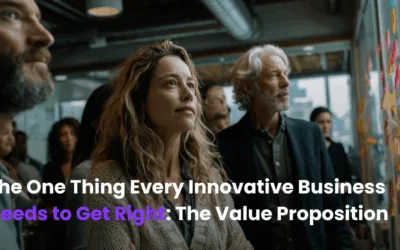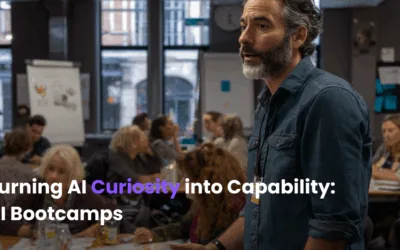For decades, organisations have been told to focus on their weaknesses. Fix the gaps. Plug the holes. Train harder. Do more with less.
But what if that’s the wrong approach?
Recent research from leadership experts Zenger Folkman suggests that strengths-based development — not weakness-fixing — is what drives sustained performance and leadership impact. It’s not just more motivating. It’s more effective.
In fact, the research boils it down to three converging focus areas – individual strengths, organizational needs, and personal passion.
When a leader can leverage natural abilities to address genuine business challenges in areas they care deeply about, development becomes self-sustaining rather than forced.
At Disruptors Co, we believe the same principle applies to innovation, AI, and organisational strategy. If you want meaningful transformation, don’t start by diagnosing what’s broken.
Start with what already works. Then build a strategy to scale it.
Strengths Are Your Strategic Advantage
Every organisation has “bright spots” — teams, processes or initiatives that already deliver value. Maybe it’s a high-performing customer service team, a product that keeps outperforming expectations, or a data capability that quietly powers great decisions.
These aren’t just wins. They’re signals.
Too often, leaders overlook them in favour of grand reinventions or technology-first roadmaps that try to fix everything at once. But the fastest path to innovation isn’t reinvention. It’s amplification.
Your strategy should answer one fundamental question:
How do we scale what we’re already great at — safely, sustainably, and with purpose?
Why Strengths-First Strategy Beats Tech-First Confusion
In the current AI gold rush, many organisations are running head-first into tools and pilots without a clear view of where they actually add value.
The result? Pilot fatigue. Change resistance. Poor ROI.
Here’s what we see instead when strategy starts with strengths:
- Faster buy-in: Teams are more open to change when they see it building on their existing capabilities.
- Clearer use cases: You already have real examples of value — not hypotheticals.
- Lower risk: You’re enhancing known workflows, not betting everything on the unknown.
- Better outcomes: When AI augments strengths, it becomes a force multiplier — not a replacement or threat.
Strategy Starts With the Right Questions
A strengths-led strategy doesn’t mean ignoring problems. It means re-framing them.
Instead of asking:
“Where are we underperforming?”
Ask:
“Where are we outperforming — and how can we replicate or scale that?”
Instead of:
“What tools should we use?”
Ask:
“What behaviours, skills or systems already drive success — and how can AI or innovation amplify them?”
At Disruptors Co, these are the questions we help organisations answer through our custom designed innovation and accelerator programs, AI Discovery Sprints, and Strategy Workshops.
Case in Point: Strategy That Scales Strengths
One client came to us frustrated by the limited reach of their programs. They found that despite the success of their programs, they were engaging the same participants year-in, year-out. But rather than focus on “fixing” the progra, we asked:
Where are things already working?
It turned out the program was kicking goals — but awareness was limited. Instead of starting over, we built a completely different approach to market. Where the program regularly saw dozens of applications, now there were hundreds. Where the engagement centred on one sector, we created new pathways into aligned industries and sectors of small business.
The result wasn’t just broader reach. It was a more empowered ecosystem.
That’s what strategy built on strengths looks like.
Build the Strategy. Then the Future.
In a world of complexity and fast-changing expectations, the temptation is to do everything at once – especially with AI in our back pocket.
But innovation is not about doing more. It’s about doing what matters — and doing it well.
Start with your strengths. Build a strategy around them. Then scale with purpose.



